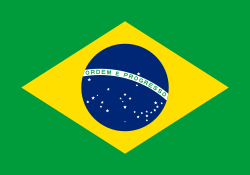Solsegel

Ett solsegel är en typ av framdrivningsmetoder för rymdfarkoster. Metoden baseras dels på den solvind som ständigt strömmar ut från solen och dels på strålningstrycket som skaps när ljus (fotoner) reflekteras i de tunna reflektorerna (vilket svarar för den större delen av framdrivningskraften och är ca 5000 gånger större än trycket från solvinden[1])
Många tror att rymdfarkoster med solsegel drivs framåt av solvinden som när vindarna driver segelbåtar och segelfartyg framåt över vattnen på Jorden. Men i stället är det främst strålningstryck som driver farkosten framåt.[2]
Solsegel har den stora fördelen att de inte behöver förses med bränsle. Det finns emellertid problem att överkomma; solsegel behöver vara mycket stora för att vara effektiva, och eftersom kraften från solvinden avtar kvadratiskt med avståndet från solen fungerar de bäst i de inre delarna av Solsystemet. Energikällan behöver inte nödvändigtvis vara en stjärna, utan andra källor kan användas, till exempel laser, mikrovågor och magnetiska fält[3].
Första praktiskt användbara solsegeldrivna rymdfarkosten blev japanska obemannade rymdsonden IKAROS, som skickades iväg 2010.
Referenser
- ^ http://www.space.fmi.fi/~pjanhune/Esail/index.html
- ^ ”Setting Sail for the Stars” (på engelska). NASA. 28 juni 2000. Arkiverad från originalet den 12 april 2016. https://web.archive.org/web/20160412183555/http://science.nasa.gov/science-news/science-at-nasa/2000/ast28jun_1m/. Läst 8 april 2016.
- ^ ”Arkiverade kopian”. Arkiverad från originalet den 13 maj 2007. https://web.archive.org/web/20070513062834/http://www.thespacesite.com/space_solar_sail.html. Läst 20 mars 2007.
Media som används på denna webbplats
MAVEN at Mars, Artist's Concept. This artist's concept depicts NASA's Mars Atmosphere and Volatile EvolutioN (MAVEN) spacecraft near Mars. MAVEN is in development for launch in 2013 and will be the first mission devoted to understanding the Martian upper atmosphere. The mission's principal investigator is Bruce Jakosky from the Laboratory for Atmospheric and Space Physics at the University of Colorado.
The goal of MAVEN is to determine the role that loss of atmospheric gas to space played in changing the Martian climate through time. MAVEN will determine how much of the Martian atmosphere has been lost over time by measuring the current rate of escape to space and gathering enough information about the relevant processes to allow extrapolation backward in time.
NASA Goddard Space Flight Center in Greenbelt, Md. manages the project and will also build some of the instruments for the mission. In addition to the principal investigator coming from CU-LASP, the university will provide science operations, build instruments, and lead education/public outreach. Lockheed Martin of Littleton, Colo., is building the spacecraft and will perform mission operations. The University of California-Berkeley Space Sciences Laboratory is also building instruments for the mission. NASA's Jet Propulsion Laboratory, Pasadena, Calif., will provide navigation support, the Deep Space Network, and the Electra telecommunications relay hardware and operations.
For more information about MAVEN, visit www.nasa.gov/maven.The Flag of Europe is the flag and emblem of the European Union (EU) and Council of Europe (CoE). It consists of a circle of 12 golden (yellow) stars on a blue background. It was created in 1955 by the CoE and adopted by the EU, then the European Communities, in the 1980s.
The CoE and EU are distinct in membership and nature. The CoE is a 47-member international organisation dealing with human rights and rule of law, while the EU is a quasi-federal union of 27 states focused on economic integration and political cooperation. Today, the flag is mostly associated with the latter.
It was the intention of the CoE that the flag should come to represent Europe as a whole, and since its adoption the membership of the CoE covers nearly the entire continent. This is why the EU adopted the same flag. The flag has been used to represent Europe in sporting events and as a pro-democracy banner outside the Union.bendera Indonesia
Flag of Iran. The tricolor flag was introduced in 1906, but after the Islamic Revolution of 1979 the Arabic words 'Allahu akbar' ('God is great'), written in the Kufic script of the Qur'an and repeated 22 times, were added to the red and green strips where they border the white central strip and in the middle is the emblem of Iran (which is a stylized Persian alphabet of the Arabic word Allah ("God")).
The official ISIRI standard (translation at FotW) gives two slightly different methods of construction for the flag: a compass-and-straightedge construction used for File:Flag of Iran (official).svg, and a "simplified" construction sheet with rational numbers used for this file.
Flag of Israel. Shows a Magen David (“Shield of David”) between two stripes. The Shield of David is a traditional Jewish symbol. The stripes symbolize a Jewish prayer shawl (tallit).
A 20-meter solar sail and boom system, developed by ATK Space Systems of Goleta, Calif., is fully deployed during testing at NASA Glenn Research Center's Plum Brook facility in Sandusky, Ohio. Blue lights positioned beneath the system help illuminate the four triangular sail quadrants as they lie outstretched in Plum Brook's Space Power Facility -- the world's largest space environment simulation chamber. The sail material is supported by a series of coilable booms, which are extended via remote control from a central stowage container about the size of a suitcase, and is made of an aluminized, plastic-membrane material called CP-1. The material is produced under license by SRS Technologies of Huntsville, Ala. The deployment, part of a series of tests in April, is a critical milestone in the development of solar sail propulsion technology that could lead to more ambitious inner Solar System robotic exploration.

























